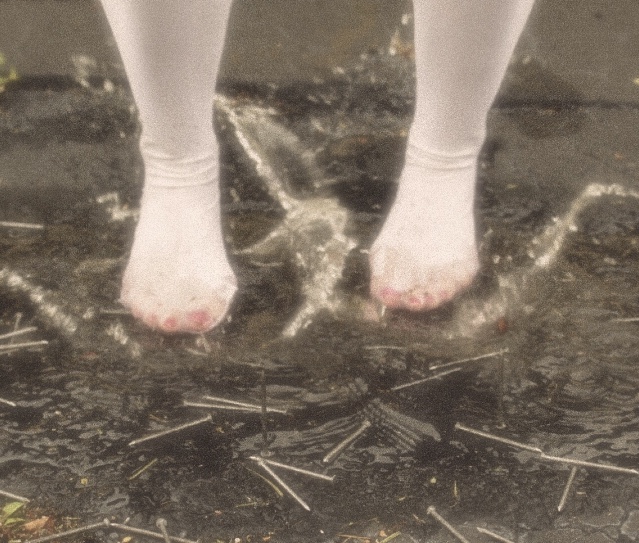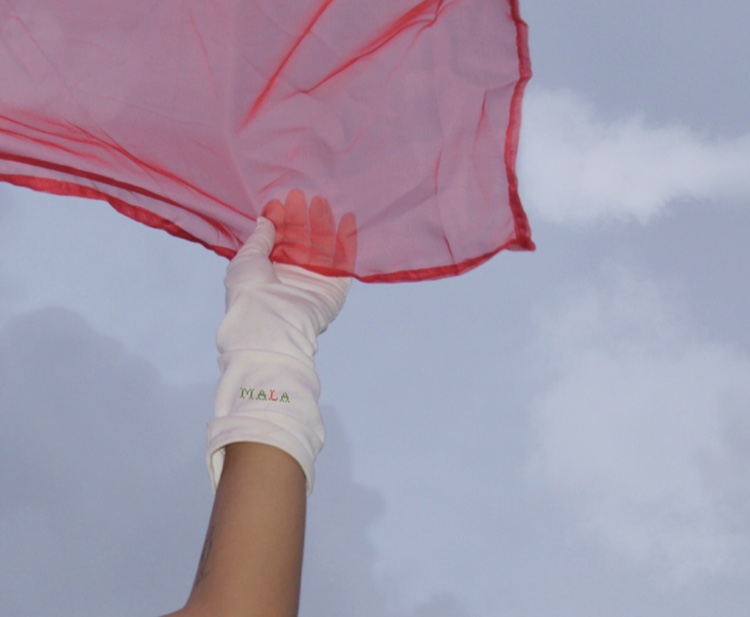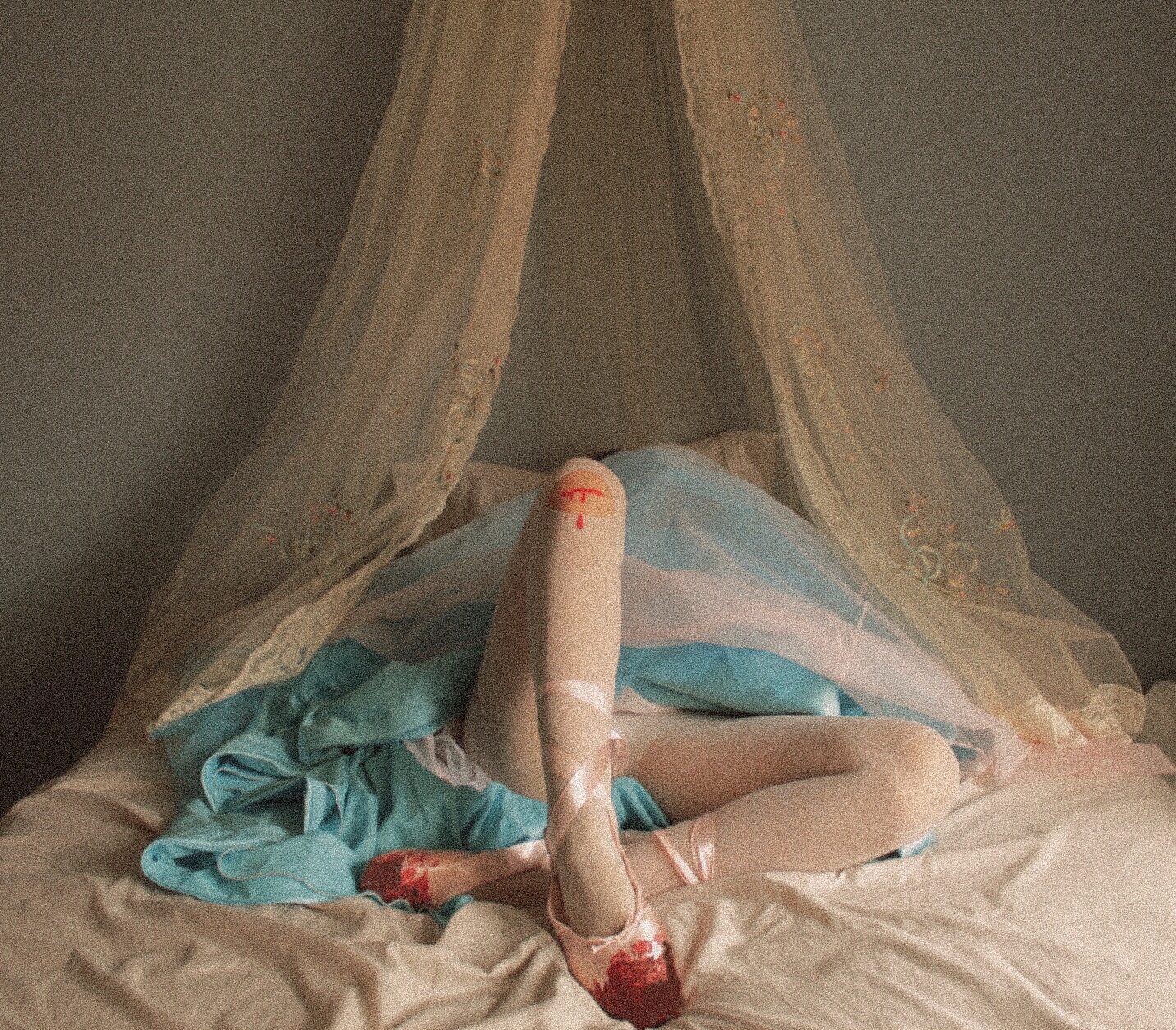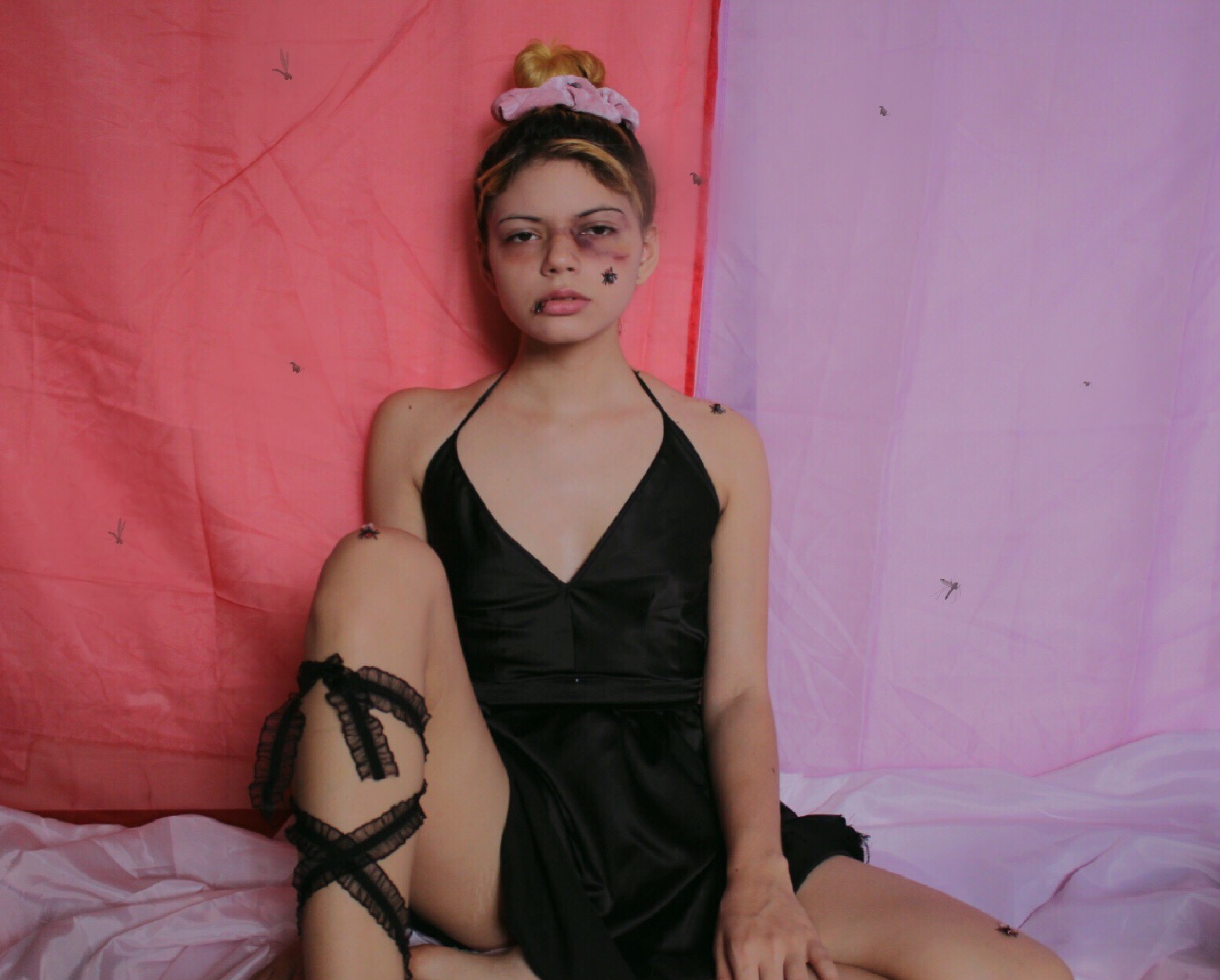



photos / Anagabriela Leon
story / Tiffany Diane Tso
Photographer Anagabriela Leon is an unknown in the elite art world — but like most young, enterprising immigrant artists, the 22-year-old has carved out her own (digital) spaces to create and share her work, to make up for the lack of access to traditional routes of artistic success. Leon, who is from Caracas, Venezuela and now lives between Miami and New York City, is a Deferred Action for Childhood Arrivals (DACA) recipient; some call them “Dreamers.” And like many immigrants, regardless of citizenship status, she finds herself sandwiched between two worlds — and not just the two physical nations that she has ties to. Leon says that because of the restrictions that come along with her status, she often finds herself stuck between her reality and the imagined realities of lives she could’ve lived if only she “belonged.”
In order to live out these imagined lives and fantasies, Leon turns to art. What results are photographic vignettes from an eerie, dreamlike world inspired by Arvida Byström and TOILETPAPER but set to a soundtrack of Kali Uchis. I first became entranced by her work on the now-defunct app PHHHOTO, where she went by the username “tedbundy,” and then I followed her to Instagram, where her still photography equally enraptured me. I found myself curious about her the contents of her feed — what on it was imaginary (art) and what was autobiographical? Are there distinct boundaries between the two, or do they blur together? I thought I’d try to get some of these questions answered, even if knowing would kill a little bit of the mystery. But really, knowing Anagabriela’s story, her background, and what drives her adds another dimension to her work so that we are left with even more questions to find the true meaning behind the images she creates.


How would you describe yourself as an artist?
I have trouble describing my art. I’m a big fan of blending genres, colors and feelings to try to exactly match what I’m imagining in my head. I’m very drawn to surrealism, dreamy 21st century costumes and gore. So in most of my pictures, you’ll find a combination of those things surrounding a message that I’m trying to get across. Sometimes the meaning is clear, and other times it’s something maybe only I would understand.
Why “Ted Bundy”? (Leon’s current Instagram handle is also @tbundyy.) What made you choose the serial killer’s name?
I honestly always feel guilty about that name. I changed it to that in high school when I found a Conversations With A Serial Killer book at a yard sale. It was about analyzing the brain of a serial killer, particularly Ted Bundy. So that made me get into studies and interviews held by neuroscientists that wanted to know more about serial killer psychology. Since Ted Bundy’s story is what first got me into that, I changed my social media handles to his name. But now that a lot of people and Hollywood are romanticizing him, I’ve been trying to change it to something I’m more comfortable with.
You do everything yourself from styling and makeup to art direction, right? Do you prefer to work alone with your photography or is it just easier that way?
I don’t necessarily prefer to work alone, but I do have a lack of social graces, and it sometimes sounds easier to maneuver my own ways to get a perfect shot with no help than to have to interact with another person. I’m sure that sounds ridiculous, but there really are so many people out there that I would want to work with or take pictures of. It’s just that sometimes I need a certain level of a connection to be able to describe the type of work I wanna do. Most of the time, when I’m talking about photoshoot ideas that I have, I feel a little embarrassed of what I’m saying.
You also tend to be the subject of your own work. How much of your work do you think is autobiographical?
About like 15% of my work is autobiographical. There’s always gonna be a little bit of my personal feelings in my photography.
Are you playing characters for your photos, or are they all just different iterations of yourself?
They’re all mostly characters that I create, because I’ve either met them, dreamed of them, or want to be them.
Can you give a little insight into your process — from inception to execution?
Sometimes my shoots are planned out, because I have a book where I write down all my ideas with details like color schemes, costumes, makeup, location, time, etc. But a lot of the time, my shoots are completely spontaneous after waking up from a dream or remembering something I thought was cool. I start running around looking for all the props and materials I’d need and just start shooting.
There is a sort of dream-like element to your photos, like they’re imaginative captures from a distant memory, or like a Sofia Coppola or Gregg Araki movie scene still. Do these scenes that you create exist in a movie or narrative from your own imagination or dreams?
I definitely think I see the world in my own certain way. And it sometimes feels like it weighs me down so much that I have to let it pour out of me and use it towards my art. It could be from a nightmare I have, or I could be walking home from work, and I’ll see something simple like a wall with chipped paint, and I start involuntarily creating a whole story in my head about this one wall that I found so interesting. And it just won’t leave my head until I start turning it into my own art. So, I guess I’m mostly just trying to accurately recreate every detail of my visual fantasies and bring them to life. It’s basically how I’m able to cope with everyday existence.
How does your perception of America or Florida as a home and your immigration status factor into these stories that you tell
with your photos?
There’s a lot of things that I’m held back from because of my status, so a majority of my stories are things I am restricted from or people that I have nothing in common with.
How does it feel to be trapped between statuses in this country, especially given what is happening back home for you and your family?
Being trapped between statuses in this country is definitely frustrating. A lot of people think and tell me that “it must not be that hard to get permanent citizenship in the U.S.,” but they definitely don’t know much about the process, especially when you’re from a country that’s going through so much turmoil. And really there’s no time to even think about that right now, because, at the moment, my parents, siblings and I are mostly concerned about what’s happening to the rest of our family over there — and how they’re gonna be able to eat with no food, or cook with no electricity, and if they are safe when they go out. We’ve been trying to help by sending money, food and clothes over there, but of course it never feels like it’s enough.
How do the events happening in your home country have an effect on your artistic output?
The things happening in Venezuela definitely affect me, and it sometimes encourages me to take more pictures, because being here and having all my family over there really makes me see how privileged I am to be here right now. I guess I feel like I have to get my shit together and stop procrastinating with shoots. It also, of course, has made me put a lot of sadness into my art. There are a lot of pictures I’ve taken that at first glimpse look cheerful, because of the color schemes and props, but the more you look at them the more you begin to notice the feelings of loneliness that they give off.
What are you hoping to achieve with your photos?
A voice to be remembered by, for when I felt silenced.
What do you want to photograph next?
I’m planning a gore-filled shoot that captures equal feelings of love and disturbances.











